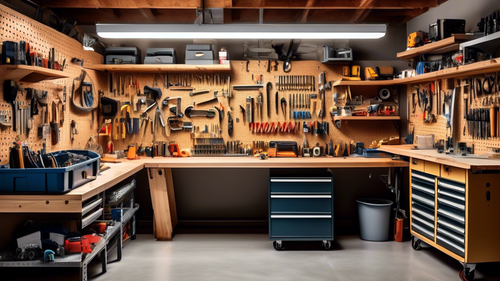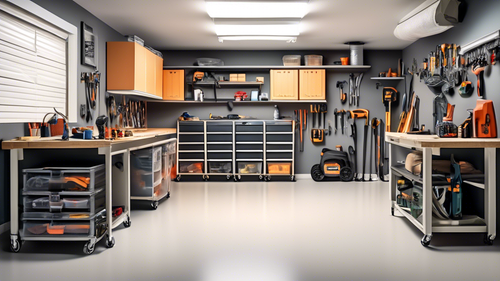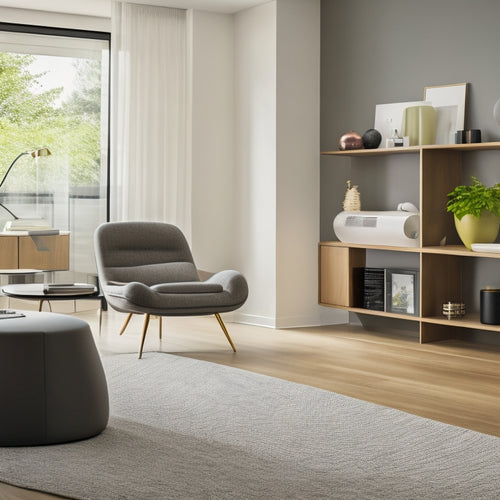
Transform Your Tiny Kitchen: Why Declutter First
Share
When you declutter your tiny kitchen, you'll reveal a more functional, peaceful space that reduces stress and promotes sustainability. By ditching unnecessary gadgets, expired ingredients, and duplicate utensils, you'll create a sense of control and achievement. As you simplify your kitchen workflow, you'll uncover hidden areas and enhance cooking efficiency. Plus, a well-organized kitchen elevates your overall mental well-being. By taking the first step to declutter, you'll be on your way to converting your tiny kitchen into a haven that sparks creativity and joy – and that's just the beginning of your kitchen's untapped potential.
Key Takeaways
- Decluttering uncovers hidden space, enhances cooking efficiency, and reduces stress in tiny kitchens.
- Removing unnecessary items promotes a peaceful cooking environment and encourages donation or recycling.
- Essential items to purge first include expired food, duplicate utensils, and broken cookware to maximize space.
- A well-designed kitchen layout with a "work triangle" optimizes workflow efficiency and minimizes traffic.
- Simplifying kitchen workflow dynamics and maximizing storage with less space leads to a more functional and organized kitchen.
Decluttering Benefits for Small Kitchens
Living in a small kitchen can be overwhelming, especially when it's cluttered with unnecessary items. You're constantly searching for space to cook, and it's hard to focus on meal prep.
By decluttering your kitchen, you'll uncover hidden space and create a more peaceful cooking environment. Start by getting rid of duplicate or broken items, and consider donating gently used cookware or gadgets.
To maintain momentum, focus on small areas and discard unused items, adopting a one in, one out policy. Implementing kitchen organization tips, such as categorizing utensils and assigning a home for each item, will help maintain your new space.
Embracing minimalist cooking will also simplify your kitchen and reduce waste. With a clutter-free kitchen, you'll feel more in control and enjoy cooking again.
Kitchen Layout Redesign Essentials
Your kitchen layout is the blueprint for a functional cooking space, and a well-designed layout can make all the difference in a small kitchen.
To optimize your kitchen's potential, consider the "work triangle" concept, where your sink, stove, and refrigerator form the points of a triangle. This layout minimizes kitchen traffic and maximizes efficiency.
Additionally, think about your design aesthetics – do you prefer a modern, sleek look or a cozy, traditional feel? Choose a layout that complements your style and creates a sense of flow.
Maximizing Storage With Less Space
You're working with a tiny kitchen, which means every inch counts.
To make the most of your limited space, you'll need to get creative with storage.
Optimize Vertical Spaces
How do you make the most of the space you have when every inch counts? When you optimize your vertical spaces, you reveal hidden storage opportunities.
Start by implementing shelf organization systems that maximize your wall space. Consider wall-mounted racks for pots and pans, and ladder shelves for less frequently used items.
Bring in some greenery with vertical gardens or hanging pots. Employ pegboard displays for frequently used utensils and magnetic strips for spices.
Stackable containers can be employed to store dry goods, while ceiling storage can hold infrequently used items. Finally, add decorative hooks for hanging items like aprons or tea towels.
Utilize Corner Areas
Corner areas, often the most underutilized spaces in a tiny kitchen, hold immense potential for maximizing storage with less space.
By installing corner shelving, you can create additional storage for infrequently used items, keeping them out of the way but still accessible.
Consider installing pull-out racks, which allow you to easily retrieve items without having to dig through cluttered shelves. This is especially useful for heavy or bulky items, like pots and pans.
By utilizing these often-wasted spaces, you'll be amazed at how much more storage you can squeeze out of your tiny kitchen.
With a little creativity, you can turn these dead zones into functional areas that make your life easier.
Streamline Countertops
As you've optimized your corner areas, it's time to tackle the countertops, where clutter can quickly accumulate.
To achieve a minimalist design, follow these guidelines for effective countertop organization:
-
Designate zones: Assign specific areas for cooking, food prep, and storage to maintain a sense of order.
-
Prioritize essentials: Keep only frequently used items on the countertops, such as a coffee maker or toaster.
-
Choose multi-functional items: Opt for appliances that serve multiple purposes, like a toaster oven with a cooktop.
- Keep it tidy: Establish a daily routine to wipe down surfaces and put away items after use.
Simplifying Kitchen Workflow Dynamics
You'll increase efficiency in your tiny kitchen by creating streamlined task zones that group similar activities together, like a dedicated coffee station or a prep area for meal prep.
This setup allows you to stay focused on the task at hand without needing to constantly move around the kitchen.
Streamlined Task Zones
In a compact kitchen, every inch counts, and cluttered countertops can quickly overwhelm the space. To regain control, focus on creating streamlined task zones that optimize your kitchen's workflow energy. This means assigning specific areas for specific tasks, ensuring that everything has a designated place and purpose.
To achieve zone efficiency, consider the following:
-
Food Prep Zone: Designate a central area for chopping, slicing, and dicing, keeping utensils and ingredients within easy reach.
-
Cooking Zone: Reserve a separate area for cooking, with the stovetop, oven, and cooking utensils conveniently located.
-
Cleaning Zone: Allocate a specific area for cleaning, with the sink, trash can, and cleaning supplies easily accessible.
- Storage Zone: Designate a zone for storing kitchen essentials, keeping frequently used items in easy-to-reach locations.
Optimized Workflow Paths
Frequently, homeowners find themselves zigzagging around their tiny kitchen, wasting precious time and energy. By optimizing workflow paths, you can simplify kitchen routing and enhance workflow efficiency. Imagine being able to move seamlessly from one task to the next, without obstacles or distractions.
| Current Path | Optimized Path |
|---|---|
| Walking around the island to grab utensils | Storing utensils in a convenient drawer |
| Reaching over countertops to access appliances | Installing a wall-mounted appliance garage |
| Weaving between chairs to get to the sink | Placing a pedestal sink in a corner |
| Opening multiple cabinets to find ingredients | Designating a specific cabinet for frequently used items |
| Stretching to reach high shelves | Installing pull-down shelves or a step stool |
Essential Items to Purge First
About five common kitchen items are taking up precious space in your tiny kitchen, making it essential to identify and purge them first.
-
Unnecessary gadgets that you've never used or won't use again, taking up significant counter and storage space.
-
Expired ingredients that are no longer safe to consume, cluttering your pantry and shelves.
-
Duplicate utensils that you've accumulated over time, making it difficult to find what you need when you need it.
- Seasonal items that only serve a purpose during specific times of the year, taking up space the rest of the time.
Creative Corner Space Solutions
Now that you've purged your kitchen of unnecessary items, it's time to maximize the space you have. Corner shelving and space-saving furniture are essential for tiny kitchens.
Look for decorative storage solutions like woven baskets or wooden crates to keep items organized and out of sight. Invest in multifunctional appliances that serve more than one purpose to reduce clutter.
Consider adding hidden compartments or vertical gardening to make the most of your walls. Collapsible tables and creative lighting can also help create the illusion of more space.
DIY Decluttering Hacks for Beginners
Five simple DIY decluttering hacks can make a significant difference in your tiny kitchen. To start, adopt a minimalist mindset and tackle emotional attachments to items you no longer need.
-
Create a decluttering checklist to help you stay focused and on track.
-
Invest in organizational tools like baskets and bins to maximize storage space.
-
Identify your everyday essentials and prioritize those items in your kitchen.
- Implement clutter-free routines, such as putting dishes away immediately after meals, to maintain your newly organized space.
Frequently Asked Questions
Can I Declutter My Kitchen Without Getting Rid of Sentimental Items?
You can declutter your kitchen without ditching sentimental items by creating sentimental storage spaces, acknowledging your emotional attachments, and finding creative ways to display or repurpose treasured items, allowing you to keep memories without the clutter.
How Do I Decide What Kitchen Gadgets Are Worth Keeping?
You'll decide what kitchen gadgets are worth keeping by evaluating their gadget necessity and space efficiency: ask yourself if you use it frequently, if it serves multiple purposes, and if it's compact or replaceable.
Will Decluttering My Kitchen Really Make It Feel Larger?
You'll be amazed how decluttering your kitchen creates the illusion of more space! By removing clutter, you're creating a sense of breathability, using visual tricks to make your kitchen space feel larger, and ultimately, more organized and functional.
Can I Reuse Old Kitchen Items in Creative Ways?
You can breathe new life into old kitchen items with upcycling ideas and kitchen hacks! Repurpose old jars as spice containers, turn mason jars into utensil holders, or convert old cutting boards into wall art - get creative and give your kitchen a fresh spin!
Do I Need to Hire a Professional Organizer for My Small Kitchen?
Like a conductor leading an orchestra, you're in charge of your kitchen makeover. You don't necessarily need a professional organizer, but their expert touch can be beneficial; consider DIY organizing tips like categorizing and prioritizing to get started, then decide if you need extra guidance.
Related Posts
-

Organize Your Garage Workbench
Organize Your Garage Workbench: A Comprehensive Guide Is your garage a disorganized mess, with tools scattered eve...
-

Maximizing Garage Storage
Maximize Your Garage Storage: A Comprehensive Guide Welcome to the ultimate guide to maximizing your garage storag...
-

Maximizing Space With Smart Home Gadgets
By incorporating smart home gadgets, you can efficiently maximize every inch of available space in your home. In the ...


